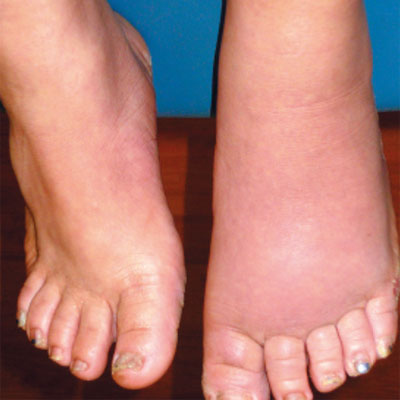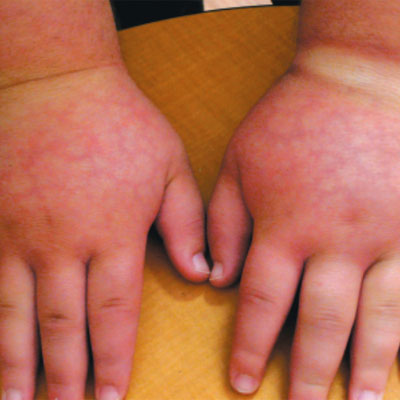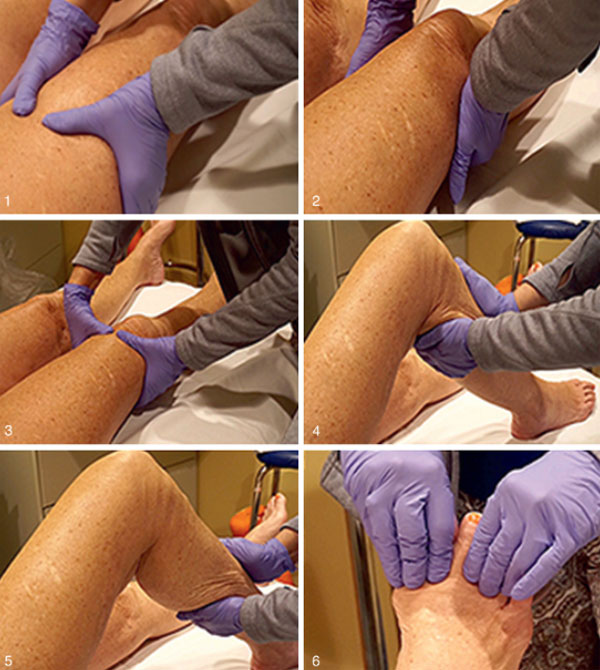The lymphatic system consists of lymph vessels and lymph modes that run through the body. Lymph vessels collect a fluid (called lymph) that is made up of protein, fats, water and wastes from the cells of the body. They carry the lymph to the lymph nodes, where it is filtered and then they return it to the blood circulation. If the lymph vessels or lymph nodes are absent or damaged, lymph cannot circulate and causes swelling ( lymphedema) of the affected arms and legs.
There are two types of lymphedema:
1) Inherited (primary) in which there is congenital lack of lymph vessels or nodes. Swelling appears around adolescence and affects the foot or calf.
2) Acquired (secondary), which is more common and is caused by an injury to the lymphatic system.

Lower Extremity Lymphedema

Upper Extremity Lymphedema
Most common causes of injury are surgical operations, radiotherapy, liposuction and burns.
Symptoms of secondary lymphedema may appear up to 15 years after the injury and include swelling, pain, heaviness and decreased flexibility of the wrist or ankle.
Swollen limbs are vulnerable to infection. Even small skin injury (cut, scratch, insect bite) can cause severe infection called lymphangitis. Lymphangitis affects the connective tissue under the skin. Repeated infections can cause scarring that makes the tissues more vulnerable to infections and swelling.
Diagnosis is confirmed with history and physical examination. Duplex Ultrasound, CT and MRI may be required to identify the cause and exclude other diseases than mimic lymphedema.
Treatment is conservative and includes:
1) Manual lymphatic drainage
2) Elastic stockings
3) External pumps
There are no medications for lymphedema and surgery is VER RARELY indicated.
Patients with lymphedema should keep the affected limb clean and dry, use an electric razor, avoid going barefoot, cross their legs or carry a handbag with the affected arm. They should not have injections or blood pressure readings performed on the affected limb.

Massage for Lymphedema
